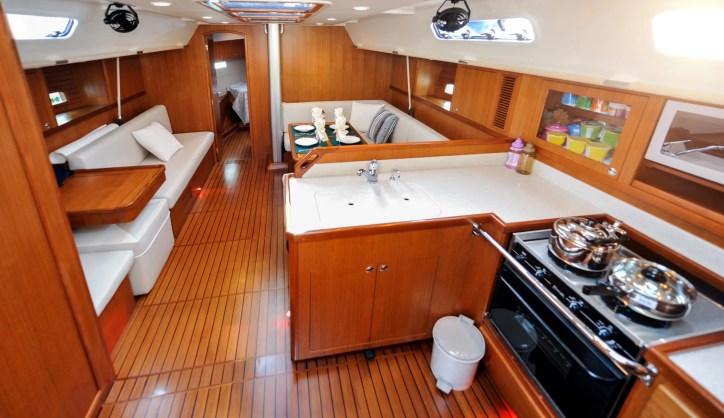Liquefied petroleum gas (LPG) — generally propane in the United States — is the most convenient, cost-effective cooking fuel for a boat since it requires no pumping or preheating. While LPG is a practical and widely used fuel for cooking on boats, its potential dangers require careful attention to safety measures and proper installation to prevent accidents and ensure safe operation. ABYC A-1-2023: Liquefied Petroleum Gas (LPG) System applies to the safe and proper installation and operation of LPG systems on boats.
Liquefied Petroleum Gas (LPG) System for Boats
A liquefied petroleum gas (LPG) system for boats is a specialized setup designed to safely store, deliver, and use propane or butane gas for cooking, heating, and sometimes refrigeration on board. Since LPG is heavier than air, any escaping gas can end up in the low areas of the boat like bilges. This poses potential risks for explosion, and as such, marine LPG systems are subject to strict safety requirements like those laid out in ABYC A-1-2023.
What Is ABYC A-1?
ABYC A-1-2023 covers liquefied petroleum gas (LPG) systems used for cooking, heating, and refrigeration on boats of all sizes, up to the point where the gas connects to the appliance. The standard addresses the design, construction, installation, and maintenance LPG systems used for cooking, heating, air conditioning, and refrigeration on all boats up to the point of interface with the appliance.
History of Liquefied Petroleum Gas (LPG)
LPG was essentially invented in 1910 by American chemist Walter O. Snelling. While researching gasoline properties, Snelling discovered propane could easily be liquefied under pressure and used as a fuel. By 1912, Snelling began marketing LPG, including the first domestic propane installation for residential use; in 1913 he patented producing propane on an industrial scale.
Information concerning practical use of LPG dates to 1918, when the fuel was utilized for brazing lamps and metal-cutting blowtorches. By the 1920s, LPG’s use expanded with the development of gas-powered cooking appliances and hence commenced the commercial production of LPG. In fact, LPG sales in the United States topped 223 thousand gallons in 1922, and over the next three years the figure grew to 400 thousand gallons.
In 1927, the first gas-powered domestic cooking appliances were developed, further expanding LPG’s market in homes and various industries. A year later, LPG was first used as motor fuel (in a truck) and the first LPG refrigerator was made, and in 1929, the level of sales of the fuel was as much as 10 million gallons in the United States. A notable milestone occurred during the 1932 Los Angeles Olympics, where propane was used to power cooking and water heating appliances in the Olympic Village.
Now LPG is a vital fuel source for homes worldwide, offering efficiency and versatility in various applications like cooking and heating. Its widespread use in marine propulsion is a relatively recent development as the maritime industry is focusing on utilizing cleaner fuels.
ABYC A-1-2023: Liquefied Petroleum Gas (LPG) System is available on the ANSI Webstore.
